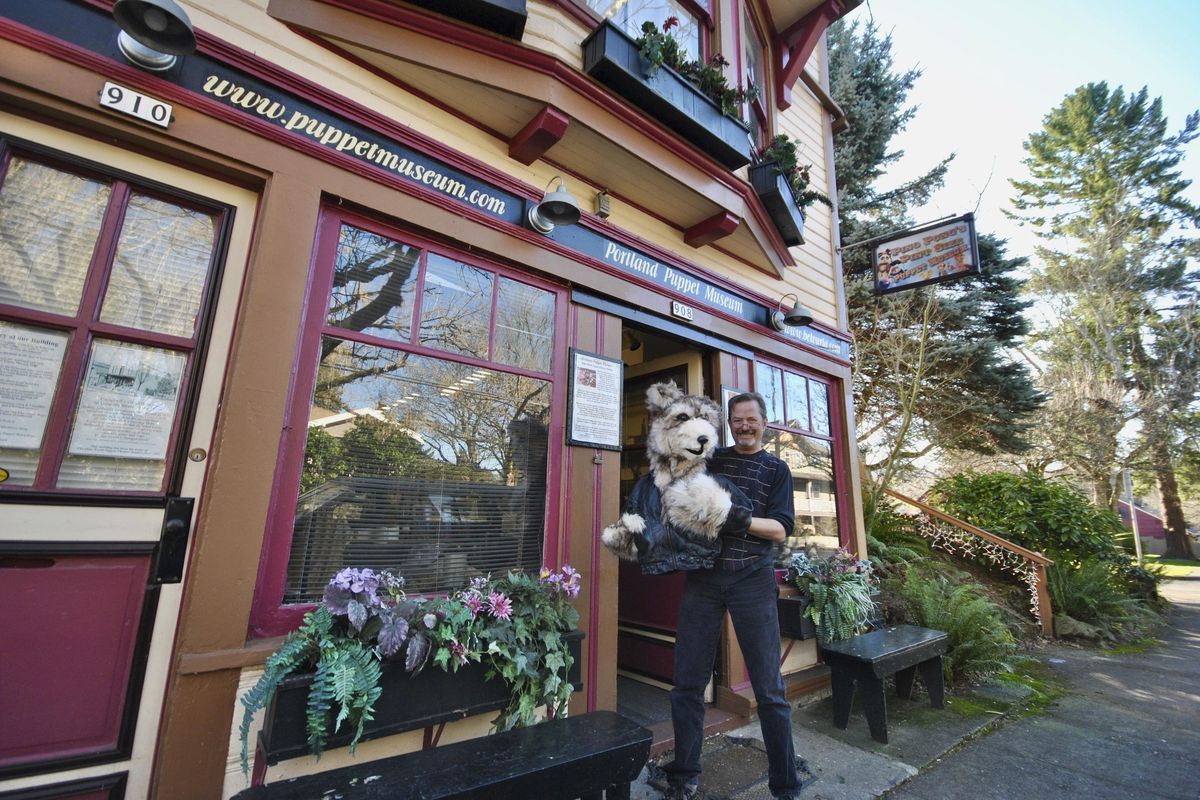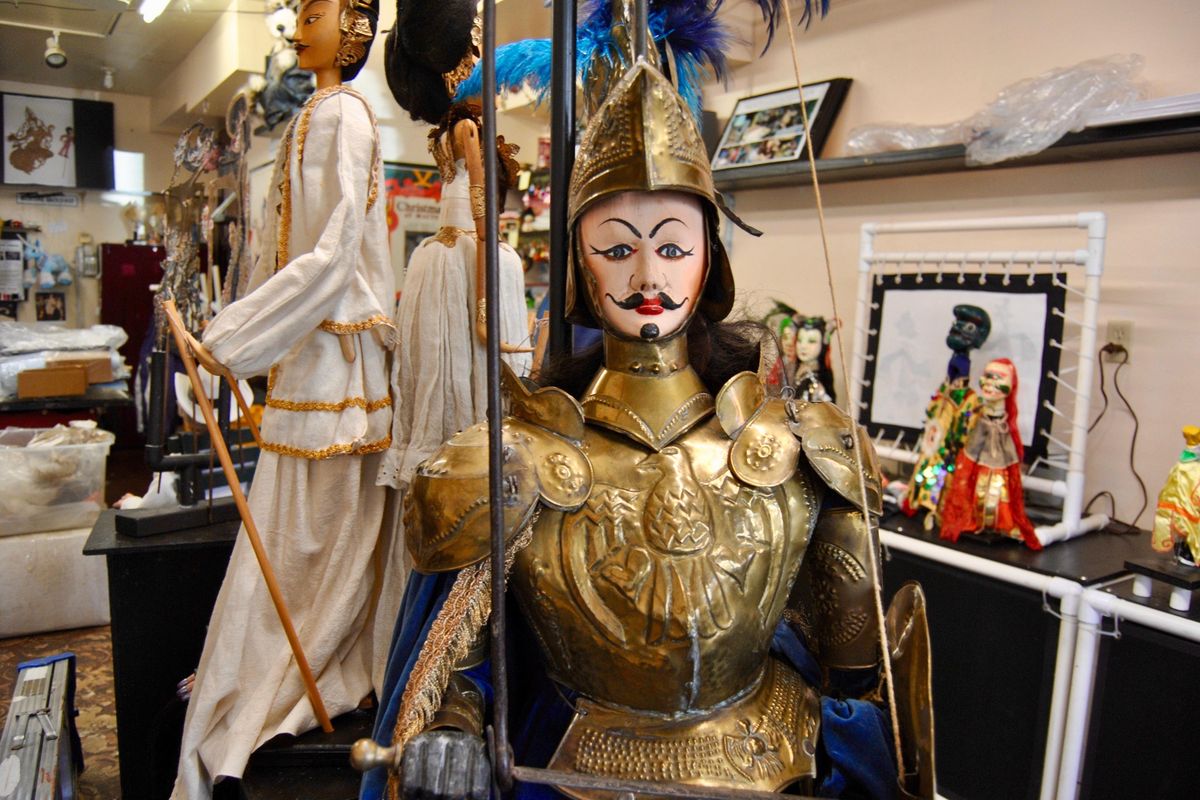Portland Puppet Museum is straight out of a storybook
In this Tuesday, Feb. 13, 2018 photo, Steven M. Overton poses with the Big Bad Wolf outside his Portland Puppet Museum in Sellwood, Ore. (Samantha Swindler / Oregonian)
PORTLAND, Ore. – From the outside, with flowers bursting from the window boxes and marionettes peeking from behind the blinds, the Portland Puppet Museum could easily pass for Geppetto’s workshop.
The red and tan painted storefront was built in 1870 as Campbell’s Grocery. Today, it’s home to hundreds of puppets of every shape, size and origin. String, hand, rod, shadow – all the great puppetry forms are represented.
Including, of course, a Pinocchio.
But on Tuesday, the museum shelves were half empty in anticipation of a new exhibit. After a scheduled closure for the month of January, the museum will reopen this week with a reception for the latest display, “Puppets of the Ancient World.”
Puppetry is the art of “creating the illusion of life,” said Steven M. Overton, the museum’s co-owner and curator. The ancient Greeks made marionettes of bone, he said. In India, they told tales with shadow puppets.
The museum will celebrate its sixth anniversary this May, but since 1992, the small space in Sellwood has been home to Olde World Puppet Theatre studio. Overton still uses the museum as a workshop, and he lives in the home next door. In the summer, the shared backyard becomes an outdoor puppetry theater.
Overton rotates the museum exhibits throughout the year because his entire inventory could never fit in the few hundred square feet of display space. His collection contains more than 2,000 handcrafted puppets representing 38 countries. Some were purchased over the years, but many more were made by Overton himself and the team at Olde World Puppet Theatre.
Overton has been designing and performing with puppets for 50 years. The 1990s were a boom time for puppetry, he said. That’s when Overton curated the “The Incredible, Fascinating, Wonderful World of Puppets” for OMSI, created creatures for the children’s “Wee Sing” video series and designed the puppets for the live-action production of “The Hunchback of Notre Dame – A Musical Adventure” at Walt Disney’s MGM Studios.
But Overton believes live performance puppetry is having another resurgence.
“ ‘Lion King’ is a giant puppet show. ‘War Horse’ is a puppet show. ‘Wicked’ – the largest puppet ever built for Broadway is the giant time dragon that is worked by nine people,” Overton said. “It’s all around us.”
Small children and adults still love the magic of puppetry and live theater.
“The thing about puppetry is that you break the barrier, you break the wall,” Overton said. “It’s different than watching something on TV. You get to touch them, you get to talk to them, you get, sometimes, to work with them, and you can’t do that with a television show. It is a very tactile experience.”
Overton’s museum allows children a chance to touch, interact with and manipulate the puppets themselves – proving that even in a world of high-tech digital entertainment, people still like the old-fashioned thrill of pulling a few strings.

